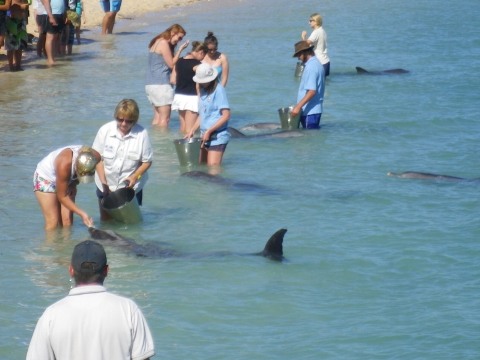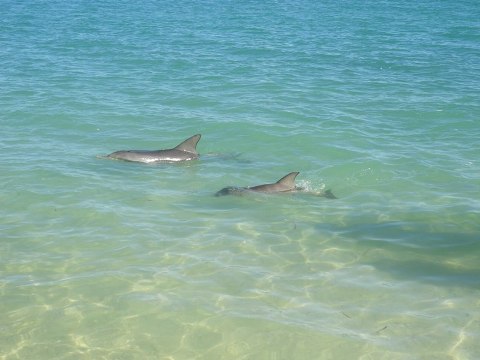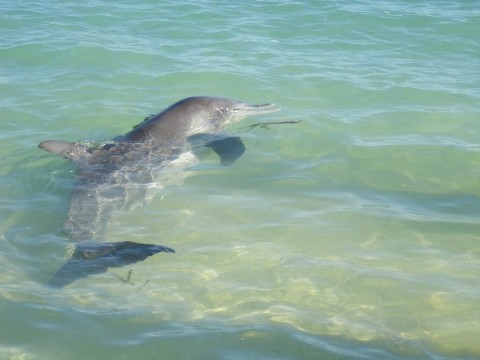 Monkey Mia, located on the Indian Ocean coast of Australia about 800km north of Perth, is a beach-side holiday destination best known for two things: the warm, sunny sub-tropical weather and the dolphins who visit the beach daily for hand-feeding.
Monkey Mia, located on the Indian Ocean coast of Australia about 800km north of Perth, is a beach-side holiday destination best known for two things: the warm, sunny sub-tropical weather and the dolphins who visit the beach daily for hand-feeding.
First, the weather. Even in the depths of winter, the average maximum temperature in Monkey Mia is only just below 25 degrees Celsius, with the average- average!- maximum in February reaching 35 degrees Celsius. Because of this extreme heat, this is one beach-side paradise for which the best time to go is actually not summer. Going in October-November or March-April is best, avoiding the worst of the desert heat while also avoiding the winter rains. This is great for people who want to take their holidays outside the usual peak months and still go some place warm and sunny.

Secondly, the dolphins. In the 1960s, a local fishing family began feeding the Indo-pacific Bottlenose Dolphins that came in close to shore. The Monkey Mia dolphin feedings gradually began to attract tourists, building the tourism industry which is the town’s main claim to fame today. Over time, the feedings were regulated by wildlife management experts to prevent dolphins becoming too reliant on them, thanks to some sad cases where mother dolphins no longer hunted for themselves and failed to teach their calves how to hunt as well, resulting in those calves dying of starvation.
Today, while many dolphins visit the beach daily (being very social animals), only a designated 6 of the dolphins get fed, and then only up to a maximum of 10% of the daily food they need over the course of three feeding sessions. The staff can recognise each individual dolphin merely from the shape of its dorsal fin sticking out of the water. The actual timing of the feeding sessions depends on when the dolphins decide to put in an appearance, although the first one is usually around 8am.

While I was there, in November 2011, the crowd had the rare treat of a baby dolphin accompanying its mother to the feedings and playing with the other dolphins. As you can see from the photos, the dolphins come into very shallow water and have no fear about approaching the humans, as by now they’ve been doing this for 4 dolphin generations. It’s a unique experience. Swimming is not allowed in the designated dolphin visit area of the beach, but it is hardly unknown for dolphins to make an appearance further up the beach and out to sea around swimmers or boats.

Some family trees of the dolphin “families” which visit Monkey Mia are found here, along with biographies of the dolphins who are part of the feeding program. At time of writing, the new baby isn’t on the family trees yet, but I can tell you that it has been named Piper, the 3rd daughter of 19-year-old Piccolo to accompany her mother to the beach.

What about the monkeys? You ask. Where are the monkeys of Monkey Mia?
Well, there are none. Monkeys aren’t native to Australia. The origin of the name of the town is unknown. “Mia” meant ‘shelter” in the local Aboriginal dialect, but as for the “monkey” part the two most common explanations given are that it was a nickname used for sheep, or the name of a pearling vessel that frequented the bay in the early days of the settlement.
View Larger Map
Monkey Mia can be reached in a couple of hours via light plane from Perth or Darwin, or by a full day’s drive up the coastal highway from Perth, and is very close to the other natural wonders of the Shark Bay World Heritage Area including the ancient stromatolites of Hamelin Pool and the gorgeous Shell Beach. It is well worth taking the time to visit if you ever get a chance to travel to Western Australia.
All photos are copyright of the author.